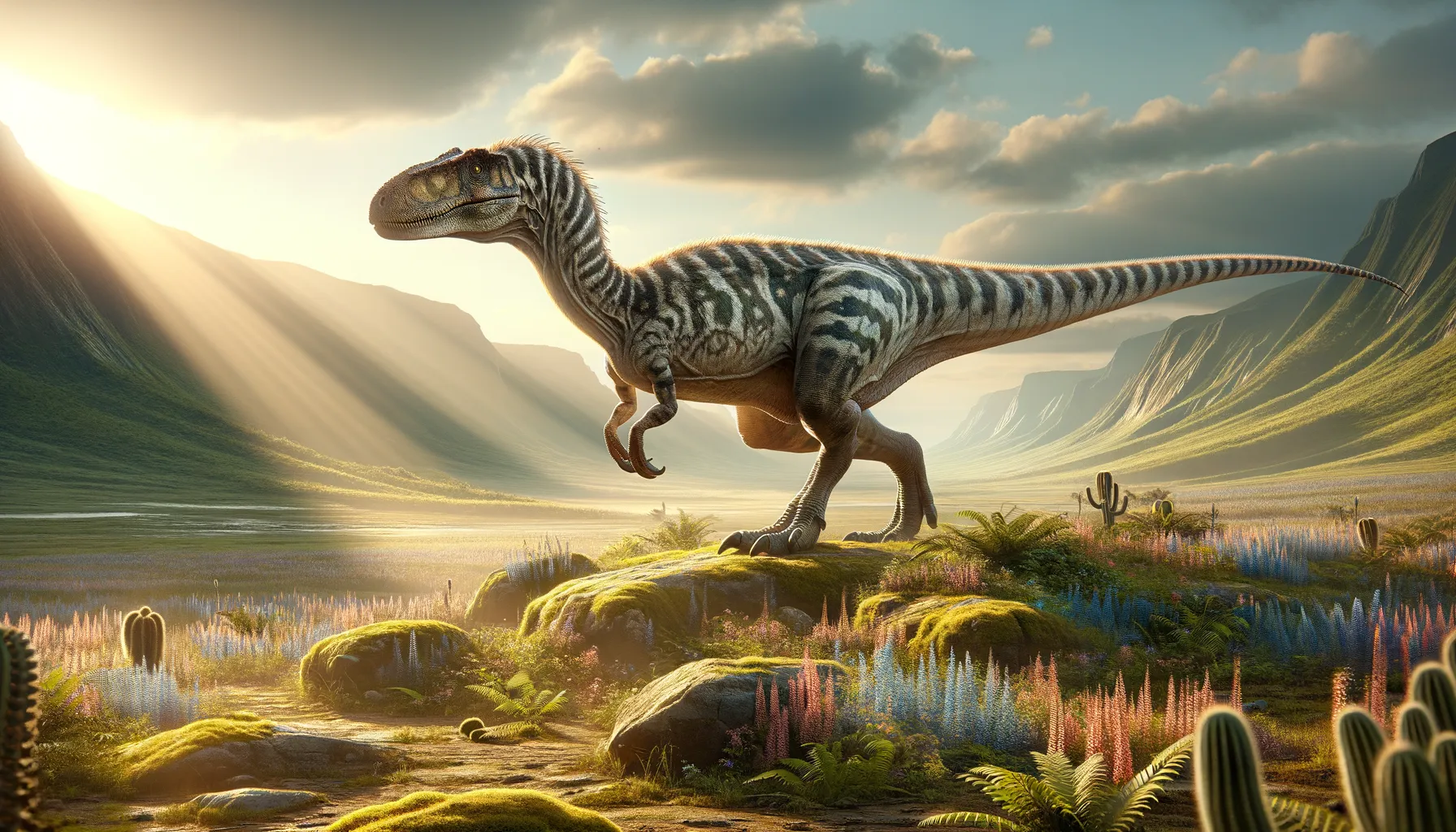
Kol
Tiny hunter of the ancient sand dunes.
Period
Cretaceous
Length
About 3 ft in length.
Height
Assumed to be around 2 ft tall.
Weight
Estimated to weigh a few kilograms.
Kol is a small theropod dinosaur that lived during the Late Cretaceous period. It was discovered in Mongolia and offers unique insights into the evolution and diversity of theropods. Although small, Kol provides important glimpses into the adaptations required to thrive in its environment. With its slender build and probable quick movements, it fills in many gaps in the evolutionary timeline of predatory dinosaurs.
Diet
As a theropod, it likely fed on small insects and possibly other small creatures. Its size suggests a diet that did not include large prey.
Hunting
Kol likely used stealth and speed to capture its prey. Its small size made it effective at hunting in tight spaces and dense vegetation.
Environmental challenges
Kol lived in a dry, desert-like environment where food resources could be scarce. It needed to adapt to sudden environmental changes, such as shifts in climate affecting plant and animal life. Predation by larger theropods and maintaining body temperature were other challenges it faced.
Speed
Likely slow due to its small size.
Lifespan
Limited information available on its lifespan.
First discovery
Discovered in 2009 in Mongolia.
Fun Facts
- Kol belonged to a group of dinosaurs known as Alvarezsauridae, which were small, feathered dinosaurs.
- It lived during the Late Cretaceous period, about 70 million years ago, in what is now Mongolia.
- Kol was a tiny dinosaur, with estimates suggesting it was only about one meter long.
- Despite its size, Kol had strong, clawed hands that might have been used to dig into ant hills or termite mounds.
- The name 'Kol' comes from an ancient Mongolian word meaning 'foot.'
- Fossils of Kol were first discovered in the Gobi Desert, a region rich with dinosaur remains.
- As an alvarezsaur, Kol is believed to have been an insectivore, primarily feeding on insects.
Growth and Development
Kol evolved to be small, an adaptation possibly linked to its reproductive strategies or environmental constraints. Growth rates would have been rapid during early life stages to avoid predation. Juveniles likely took advantage of different ecological niches compared to adults.
Habitat
The habitat where Kol lived was characterized by sandy dunes and sparse vegetation. Such environments required adaptability to shifts in food availability. It thrived where temperatures could vary significantly between day and night.
Interaction with other species
Kol coexisted with other small and medium-sized theropods. Less likely to compete directly with them due to dietary preferences, it would have interacted mostly with its direct prey. Potential threats included larger theropods and other predators in its ecosystem.
Natural lifespan
Kol's lifespan may have reached 10–15 years under natural conditions.
Reproduction
Like many small theropods, Kol would have laid eggs in sandy nests. Parental care was likely, protecting the young from predators. Pair-bonding or social structures during breeding season are possible, enhancing offspring survival.
Social behaviour
Kol may have lived in small groups, helping in foraging and defense. Interactions within its group could include cooperative hunting tactics. Social hierarchies may have dictated mating and territorial behavior.
Fossil locations
Kol fossils have been primarily found in Mongolia, particularly in the Gobi Desert region. These fossil sites also host a variety of other theropods, which helps in comparative studies. Excavations in these areas have provided a wealth of information on the Cretaceous ecosystem.
